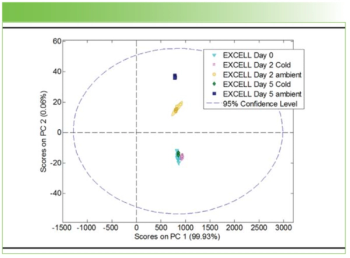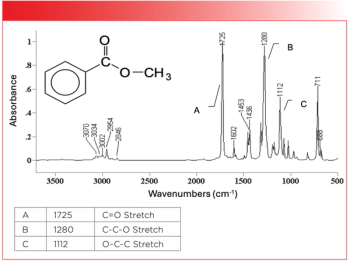Key Points
- Researchers used mid-infrared (MIR) spectroscopy combined with chemometric modeling to accurately authenticate the geographic origin of cachaças from Brazil's Brejo Paraibano region.
- The DD-SIMCA classification model achieved 100% sensitivity and specificity in test sets, outperforming OC-PLS and proving highly effective in distinguishing regional spirits.
- Key quality parameters such as alcohol levels revealed compositional differences, supporting the need for geographic authentication to protect local producers from fraud.
A recent study published in the journal Food Chemistry explored Brazil’s cachaça industry, focusing on a new analytical method that can confirm the geographic origin of cachaças from the Brejo Paraibano region in Brazil. This study, which was led by Emanuella Santos Sousa and David Douglas Sousa Fernandes from the State University of Paraíba, showed how mid-infrared (MIR) spectroscopy can play a valuable role in confirming the authenticity of Brejo Paraibano cachaças (1). Ultimately, this study demonstrates how the integration of spectroscopy with chemometric modeling can effectively distinguish premium Brejo Paraibano cachaças from those produced elsewhere in Brazil.
What is Cachaça?
Cachaça is a distilled spirit made from fermented sugarcane juice (2). This alcoholic beverage is considered important to Brazilian culture and its food and beverage industry (1,2). The Brejo Paraibano microregion is where cachaca is produced, and it is located in the state of Paraiba, which is known for its humid, mountainous terrain (1,2). However, with increasing commercialization and regional labeling, the need to verify geographic authenticity has become critical to prevent fraud and protect regional producers.
What was the experimental procedure?
The researchers, as part of the experimental procedure, collected 100 cachaça samples from 14 distinct brands within the Brejo Paraibano region (CBP), which ensures diverse representation across different production batches (1). Out of the samples collected, there were 40 non-CBP samples representing 13 brands from five Brazilian states, which include São Paulo, Minas Gerais, Pernambuco, Ceará, and other areas of Paraíba. Some of these were acquired from commercial outlets in Campina Grande, while others were obtained directly from producers outside the CBP area (1).
Taking these samples, the researchers used MIR spectroscopy to analyze them. MIR spectroscopy was used in this study because it is a non-destructive technique that captures the chemical fingerprint of a substance based on its molecular vibrations (1). The data obtained was processed through two powerful one-class classification models, which were one-class partial least squares (OC-PLS) and data-driven soft independent modeling by class analogy (DD-SIMCA). These models are particularly suited for distinguishing a target class (in this case, CBP cachaças) from all others (1).
Which Classification Model Performed Better?
Between the two models, the DD-SIMCA model demonstrated better accuracy compared to OC-PLS. After applying preprocessing techniques, specifically, baseline shift correction and Savitzky-Golay smoothing with 21 data points, the DD-SIMCA model achieved 100% sensitivity and specificity in the test set (1). At a 0.05 significance level, the model’s overall classification efficiency reached 98.4%, highlighting its robustness and reliability (1). Even at a stricter 0.01 significance level, the model maintained a high efficiency of 96.8% (1).
As a result, combining MIR spectroscopy and DD-SIMCA modeling allowed the research team to accurately discriminate the geographic origins of cachaças.
What key quality parameters were incorporated in the study?
The researchers also conducted statistical analyses of several key quality parameters, including volatile acidity, copper content, density, and alcohol content, which helped explore compositional differences between CBP and non-CBP samples. The CBP cachaças showed elevated copper concentrations in select samples, possibly because of traditional distillation methods involving copper stills (1). Meanwhile, approximately 50% of the non-CBP samples exhibited significant deviations in alcohol content, suggesting broader variability in production standards outside the Brejo Paraibano region (1).
What were the classification challenges in this study?
In the study, the researchers had challenges classifying non-CBP samples from distilleries within Paraíba but outside the Brejo microregion. However, the DD-SIMCA model was able to accurately authenticate CBP cachaças. By combining MIR spectroscopy with chemometric modeling, the researchers have provided a powerful tool that benefits both producers and consumers alike (1). It could also set a precedent for similar geographic authentication efforts in other high-value regional food and beverage products.
References
- De Oliveira, S. C.; Oldoni, T. L. C.; Veras, G.; et al. Non-destructive Authentication of Cachaças from Brejo Paraibano based on MIR Spectroscopy. Food Chem. 2025, 477, 143554. DOI: 10.1016/j.foodchem.2025.143554
- Ratkovich, N.; Esser, C.; de Resende Machado, A. M.; et al. The Spirit of Cachaça Production: An Umbrella Review of Processes, Flavour, Contaminants and Quality Improvement. Foods 2023, 12 (17), 3325. DOI: 10.3390/foods12173325






